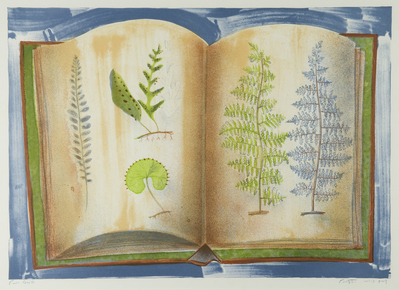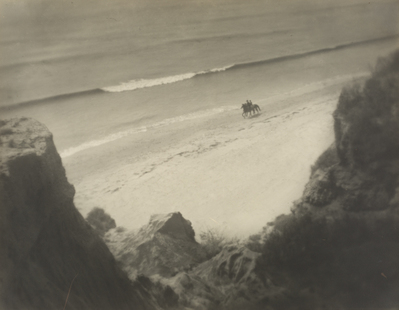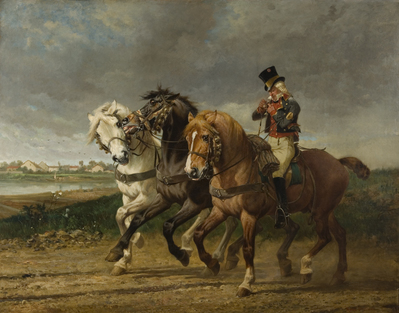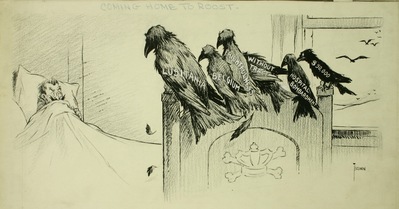Highlights
My Choice Series

Each month a member of our community is invited to browse our online collection and select six of their favourite artworks, available to view until 30 April 2024. Local maker Frances Stachl (Ngāpuhi) has taken up the mantle for this autumn edition. We thank Frances for her thoughtful selection of works and for also opening up a conversation that raises important questions of what the collection contains historically and what we want it to become in the future.
Fern Fever

As part of the Fern Fever programme celebrating huruwhenua (our native ferns) we present a selection of artworks from the Sarjeant Gallery collection. Fern Fever pays homage to the Victorian craze for ferns and is presented by the Alexander Heritage and Research Library in conjunction with Whanganui District Council Parks. Check out the events from 12 March until 8 April 2024 including an exhibition and talks featuring their collection of rare fern and botanical books on now at the Alexander Heritage Library in Pukenamu Queen's Park. Get out into nature to learn about ferns with guided walks around Virginia Lake, Bushy Park Tarapuruhi, and Waitahinga Trails.
Denton Collection

Frank James Denton was born in Wellington in 1869 and worked as a successful commercial photographer in Whanganui from 1899 until 1927. In 1919, when the Sarjeant Gallery opened, Mayor Charles Mackay commissioned Denton to curate an international exhibition of art photography at the Sarjeant Gallery. In 1926 over 170 photographs gathered by Denton from around the world were exhibited. Subsequently 83 of the photographs were donated to the Gallery’s collection, making it the first Gallery in New Zealand to seriously collect photography. The works in the Denton collection are part of an international movement that dominated photography during the later 19th and early 20th centuries called Pictorialism, These photographers aimed to elevate the status of photography as a true art form rather than as a mere record of reality. As a result many Pictorialist prints were produced using technically complex and experimental methods. Following close examination by photographic conservator Mark Strange in 2017-2018 the works in this collection now have detailed media descriptions. This collection is of international significance as New Zealand's largest, finest and most comprehensive public collection of Pictorialist photographs.
Bill Milbank Selected Works

In honour of Bill Milbank (b.1948, d.2023) this selection of works from the Sarjeant Gallery collection is from the recent exhibition ‘Bill Milbank: Selected Works’ displayed at Sarjeant on the Quay, August to October 2022. Milbank was the Gallery’s director 1978-2006 and during his tenure he developed facets of the Gallery’s programming and collecting that remain cornerstones of what we do today. These artworks, selected in collaboration with Milbank, demonstrate four of these facets: his commitment to forming and nurturing relationships with artists; the evolution of the series of site-specific dome installations; the artist-in-residence programme at Tylee Cottage; and an early commitment to showing and collecting contemporary work by Māori artists. Milbank’s tenure as director was, as he stated, “a time of collaboration and facilitation” on his part. In Curator Greg Donson’s words: “Rest in peace dear Bill, you’ll always be with us, stitched into the stone, present in the dome, and in the bays of the Gallery wings.”
Warren Viscoe

It is with a heavy heart that we acknowledge the recent passing of much-loved New Zealand sculptor Warren Viscoe. Born in Auckland in 1935, Viscoe studied in New Zealand, London and Toronto where he met his wife Pierrette. Following teacher training Viscoe taught art part-time at Penrose High school, Elam School of Fine Arts, and Unitec Institute of Technology. Known for his substantial wooden sculptures and installations, Viscoe first exhibited at the Sarjeant Gallery in 1978 in ‘Five New Zealand Sculptors’. In 1985 the Sarjeant Gallery acquired our first Viscoe work for the collection; ‘Quarryman’s Dream’. Since that time Viscoe regularly engaged with the Sarjeant Gallery and, as a result, the Gallery has built up a significant collection of his work. Major exhibitions at the Sarjeant Gallery include ‘Out of the Woods’ in 1990 in conjunction with the Wanganui Wood Symposium as well as the 1996 retrospective, accompanied by his dome installation ‘Interpolation of an Icon’. In 2000 the Sarjeant Gallery published ‘Warren Viscoe. Life and Limb’, written by Justin Paton. As well as the Sarjeant Gallery and a number of private collections his work is in the collections of Te Manawa, Museum of New Zealand Te Papa Tongarewa, and Auckland Art Gallery Toi o Tāmaki. Peter McLeavey represented Viscoe throughout most of his career and he is currently represented by Miranda Gallery at Pokeno. Viscoe passed away on 20th January 2024.
International Collection

The majority of the Sarjeant Gallery’s holdings of international artwork focuses on 18 th and 19 th Century British and European art. As a result of the early collecting trips to Europe by Ellen Neame (Henry Sarjeant’s widow) and John Armstrong Neame (her new husband) between 1913 – 1930, quite a number of the earlier works in the collection represent the conservative colonial taste in art at the time. The Gallery has continued to add to this collection both as a result of bequests and active purchases.
WWI Cartoon Collection

Early in 1917, in an effort to secure works for the Sarjeant Gallery’s early collection, Whanganui Mayor Charles Mackay began a letter writing campaign to cartoonists and magazine editors in most of the World War I allied countries. The response was remarkable and by 1918, when the war finally finished, the Gallery had nearly 120 cartoons from Australia, the United States of America and Britain. These works provide a unique snapshot into the political commentary of a turbulent period in our history.

